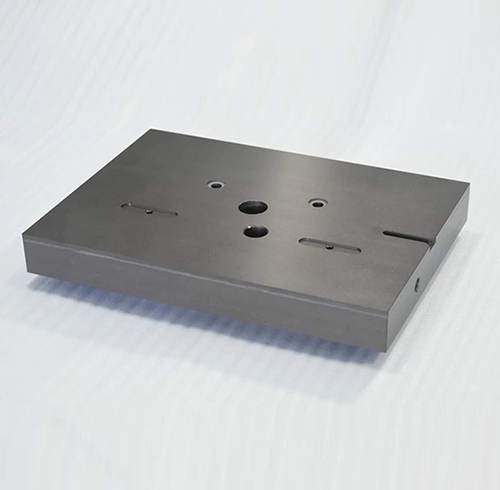Hello, welcome to Dalian Kaide Precision Machinery Co., Ltd!
Dalian Kaiman Technology Co., Ltd
Dalian Kaide Precision Machinery Co., Ltd
Contacts:Sun Zong
Mob:+86-13555929577
Tel:+86-0411-88026630
Email:dlkdjmjx@163.com
URL:www.dl-kd.com
Add:Fuquan Construction Group Hospital, Zhanqian street, Jinzhou District, Dalian
Dalian automotive parts processing is a complex and precise process that involves the comprehensive application of various materials, processes, and technologies. With the continuous development of the automotive industry, processing technology is also constantly innovating and advancing. In the future, trends such as lightweighting, intelligence, and green manufacturing will further promote the development of automotive parts processing technology, bringing more opportunities and challenges to the automotive manufacturing industry.
Aluminum alloy has the advantages of low density, high strength, and good corrosion resistance, and is widely used in lightweight design of automobiles. Common aluminum alloy components include engine cylinder block, gearbox housing, body panels, etc. Plastic and composite materials have the advantages of light weight, corrosion resistance, and easy molding, and are widely used in the manufacturing of automotive interior, exterior, electrical systems, and other components. Common plastic materials include polypropylene, polycarbonate, nylon, etc.
What are the methods for controlling the processing technology of automotive parts in Dalian?
Process design stage
Reasonably plan the process flow: Based on the structural characteristics, precision requirements, and production batch of the components, develop a scientific and reasonable process flow. For example, for complex box type parts, it may be necessary to use principles such as surface first, hole second, and separation of rough and fine machining to arrange the machining sequence, in order to reduce machining errors and deformations.
Optimize process parameters: Determine better cutting parameters such as cutting speed, feed rate, cutting depth, etc. through experiments and data analysis. At the same time, factors such as tool selection and cutting fluid usage should be considered to improve machining efficiency and quality, and reduce costs. For example, for parts with high hardness, hard alloy cutting tools can be selected, and the cutting speed and feed rate can be appropriately reduced to prevent rapid tool wear and surface burns of the parts.
Raw material control
Strict screening of materials: Ensure that the raw materials used meet the design requirements, including their composition, hardness, microstructure, and other aspects. Strictly inspect and accept raw materials to prevent unqualified materials from entering the production process. For example, for high-strength bolt steel, it is necessary to strictly control its carbon content, alloy element content, and other indicators to ensure the strength and toughness of the bolt.
Material pretreatment: Pre treat raw materials as needed, such as annealing, normalizing, quenching and tempering, to improve their processing performance and microstructure, and reduce deformation and stress during the processing. For example, for some forged blanks, annealing treatment before mechanical processing can reduce material hardness, improve cutting performance, and eliminate forging stress.
Processing equipment and tool management
Equipment maintenance and upkeep: Regularly maintain and upkeep processing equipment to ensure its accuracy and stability. Conduct daily inspections of equipment, promptly identify and resolve equipment malfunctions, and prevent a decrease in processing quality caused by equipment problems. For example, regular lubrication and precision testing of the machine tool's guide rails, as well as dynamic balance testing of the spindle.
Tool management: Establish a tool management system, including the procurement, storage, use, and replacement of tools. Choose the appropriate tool and grind and adjust it according to the machining requirements. Monitor the wear of cutting tools and replace severely worn tools in a timely manner to ensure machining accuracy and surface quality. For example, when processing aluminum alloy parts, diamond coated cutting tools can be used to improve the wear resistance and cutting efficiency of the tools.
Process monitoring
Online detection: Using online detection technologies such as laser measurement, coordinate measuring instruments, etc., real-time detection of parts during the processing is carried out, and processing errors are detected and adjusted in a timely manner. For example, when machining engine cylinder blocks, an online measurement system can be installed on the machining center to measure parameters such as cylinder bore diameter and cylindricity in real time, in order to correct machining parameters in a timely manner.
Process data collection and analysis: Collect various data during the machining process, such as cutting force, cutting temperature, machine tool vibration, etc., monitor the machining status through data analysis, predict potential quality problems, and take corresponding measures. For example, by analyzing the variation curve of cutting force, the wear condition of the tool and the rationality of cutting parameters can be determined.
Personnel training and management
Skill training: Provide professional skill training to operators to familiarize them with processing technology and equipment operation, master correct processing methods and quality control points. Regularly organize technical exchanges and training activities to improve the technical level and problem-solving ability of operators. For example, conducting CNC programming training, tool usage skills training, etc.
Quality awareness cultivation: Strengthen the quality awareness education of operators, make them realize the importance of quality, strictly abide by process regulations and quality standards, and ensure that every processing link meets the requirements. Establish a quality reward and punishment system to motivate operators to actively participate in quality control and improve product quality.
environmental control
Temperature and humidity control: Maintain stable temperature and humidity in the processing workshop to avoid component deformation or affecting processing accuracy due to changes in environmental temperature and humidity. For the processing of high-precision components, a constant temperature and humidity workshop can be used to control the temperature and humidity within a certain range. For example, for the processing of optical lenses, the workshop temperature is generally controlled at 20 ℃± 2 ℃, and the humidity is controlled at 40% -60%.
Cleanliness control: Maintain the cleanliness of the processing environment to prevent impurities such as dust and oil from entering the processing area, which can affect the surface quality and assembly performance of components. Regularly clean the processing equipment and workplace, using air purification equipment and filtration systems to improve the cleanliness of the workshop. For example, in the automobile engine assembly workshop, a dust-free workshop is usually used, and strict cleaning and disinfection treatment is carried out for personnel and materials entering the workshop.
Automotive parts processing refers to the process of transforming raw materials or semi-finished products into automotive parts that meet design requirements through mechanical processing, casting, forging, stamping, welding, heat treatment, and other technological means. There are various types of automotive components, including engine parts, chassis parts, body parts, electrical system parts, etc. Each component has its specific functional and performance requirements, so the machining process needs to be customized according to the characteristics of different components.
Casting is a processing method in which molten metal is poured into a mold and cooled to form the desired shape. Casting is suitable for producing complex shaped and large-sized components, such as engine cylinder blocks, gearbox housings, etc. Forging is a processing method that applies pressure to metal materials to induce plastic deformation and obtain the desired shape. Forged parts have high strength and good toughness, and are commonly used in the production of key components such as crankshafts and connecting rods.


Focus on us
National consultation hotline:
+86-0411-88026630
Tel:+86-13555929577
Email:dlkdjmjx@163.com
Add:Fuquan Construction Group Hospital, Zhanqian street, Jinzhou District, Dalian